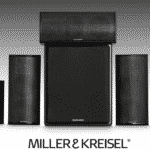
Jitesh Donga, Chief of Design, Mahindra Lifespaces, speaks about the transformative impact of Building Automation Systems (BAS), Home Automation, and Smart Lighting technologies in modern residential projects. In this discussion, Donga shares key insights into trends, successful implementations, and the future of smart living.
How would you describe the current level of adoption of Building Automation, Home Automation, and Smart Lighting technologies in your projects?
The adoption of Building Automation Systems (BAS), Home Automation, and Smart Lighting technologies is a cornerstone of our project designs. These technologies are integral in enhancing the operational efficiency and energy conservation of buildings. Building Automation Systems (BAS) enable centralised control of building-wide systems such as HVAC, Lighting, Security, and Energy Management. Home Automation systems offer residents unparalleled convenience and control over various aspects of their homes, from lighting to climate control and security. More and more projects are prioritising these technologies to deliver smarter, more efficient living spaces.
Have you observed an increased demand or preference among homebuyers for properties equipped with these technologies? If so, how has it influenced market dynamics?
Absolutely, there has been an increase in demand among homebuyers for properties equipped with advanced automation technologies. Today’s consumers are more tech-savvy and environmentally conscious, seeking homes that offer convenience, efficiency, and sustainability. Properties with integrated automation systems are perceived as premium offerings, leading to higher demand and often commanding better market valuations. Developers who provide pre-installed automation infrastructure eliminates the need for retrofitting, which not only maintains the aesthetic integrity of the property but also adds substantial value.
Can you share examples of your projects where you have used the above-mentioned technology? Can you share the brand and smart solution used?
At Mahindra Citadel in Pimpri, Pune, we have seamlessly integrated advanced home automation technologies to enhance living standards. In collaboration with Zunpluse, we’ve introduced a range of smart solutions designed to elevate the resident experience. Our home-automation offerings include BLDC fans, smart plugs, smart doorbells, and smart locks—essential features that align with current market standards for modern living. These technologies not only offer state-of-the-art security systems and energy-saving mechanisms but also add premium conveniences, making homes more secure, energy-efficient, and comfortable. This collaboration ensures that residents benefit from the latest in home automation, contributing to an enhanced quality of life.
Have you noticed any positive impact on operational costs and long-term sustainability goals through the implementation of the Building Automation System?
The implementation of Building Automation Systems has significantly contributed to reducing operational costs and advancing our long-term sustainability goals. These systems enable the facility management team to monitor and control essential services and allied systems such as pumps, ventilation fans, DG sets, electrical panels, lifts, and fire alarm systems with greater efficiency. The automation reduces the need for manual intervention, leading to a decrease in labour costs. Moreover, by optimising the use of energy across various building systems, we enhance overall energy efficiency, which translates into substantial cost savings over time. These efficiencies align with our sustainability objectives, reducing the carbon footprint of our buildings and contributing to greener urban environments.
What training or support do you provide homeowners to help them understand and use these smart technologies effectively?
To ensure homeowners can fully leverage the benefits of smart technologies, we provide comprehensive training and support. Our facility management teams and service providers offer hands-on guidance which will help our residents to understand and operate these systems efficiently. We organise orientation sessions that cover the functionalities and advantages of the installed technologies. Additionally, detailed user manuals and instructional guides are provided by our technology partners, offering step-by-step instructions on the usage and troubleshooting of these smart solutions. This proactive approach ensures that homeowners are comfortable and confident in using their smart home features.
Have you collaborated with technology partners or vendors to implement these solutions? If so, can you share details about these partnerships?
Yes, we have established strategic partnerships with leading technology providers to implement these advanced solutions. For instance, our collaboration with Zunpluse has been instrumental in bringing the latest smart home technologies to our projects. Zunpluse provides a suite of smart solutions that enhance security, improve energy efficiency, and offer premium conveniences to our residents. These partnerships are vital as they allow us to integrate cutting-edge technology seamlessly into our developments, ensuring our projects meet the highest standards of modern living.
Have you seen any impact on property values due to the integration of smart technologies?
Certainly, the integration of smart technologies has had a positive impact on property values. Homes equipped with advanced automation systems are highly sought after, as they offer superior convenience, enhanced security, and improved energy efficiency. These features make the properties more attractive to potential buyers, who are willing to pay a premium for such benefits. As a result, properties with integrated smart technologies tend to have higher market valuations and experience faster sales cycles. This trend underscores the value addition that smart technologies bring to residential real estate.
Can you discuss any case studies or success stories where the implementation of these technologies significantly improved the quality of life for occupants or the efficiency of building operations?
One notable success story is our project at Mahindra Citadel, where the implementation of smart technologies is set to significantly enhance both building operations and the resident experience. The future residents will benefit from advanced security systems, offering enhanced peace of mind, along with smart lighting and climate control systems designed to provide convenience and energy savings. The building management team anticipates increased operational efficiency through the automation of essential services, which is expected to lead to reduced energy consumption and lower operational costs. These advancements are poised to contribute to a more sustainable building operation and a superior living experience for future occupants.
Are there any specific standards or certifications you aim to achieve when incorporating these technologies into your projects?
Yes, we aim to achieve several standards and certifications that underline our commitment to sustainability and energy efficiency. The integration of Building Management and Integrated Energy Monitoring Systems is a critical component of this strategy, helping us to enhance the energy efficiency of our buildings. Achieving green certifications, such as GRIHA and IGBC, is a key goal for our projects, as these certifications validate our efforts in creating environmentally responsible and sustainable living spaces. These certifications not only improve the marketability of our properties but also reassure buyers of our commitment to high standards of environmental stewardship.
How do you balance the cost of implementing these technologies with the benefits they provide to homeowners?
Balancing the cost of implementing smart technologies with the benefits they offer is an essential consideration in our development strategy. By adopting an energy-efficient approach, we manage to reduce the overall energy demand, which in turn reflects lower common area maintenance charges and reduced electrical bills for tenants. The long-term savings on energy costs and the enhanced property value justify the initial investment in these technologies. Additionally, the improved convenience, security, and sustainability offered by smart technologies significantly enhance the living experience, making it a worthwhile investment for both developers and homeowners.
Can you share any insights on how the adoption of these technologies has evolved over the past few years in your projects?
The adoption of smart technologies in our projects has evolved significantly over the past few years. Initially, these technologies were considered luxury add-ons, but they have now become essential components of modern residential developments. Our experience shows that technology-enabled buildings require less human intervention, offer greater convenience to users, and substantially increase the energy efficiency of the building. As consumer awareness and demand for smart home features have grown, we have progressively incorporated more advanced and integrated systems into our projects. This evolution reflects our commitment to staying ahead of market trends and continuously enhancing the value proposition for our customers.















